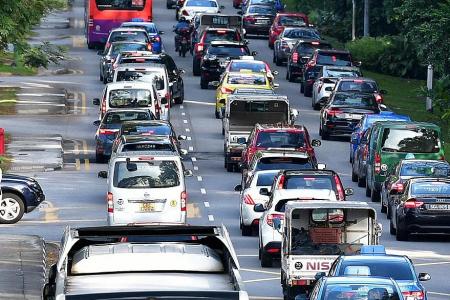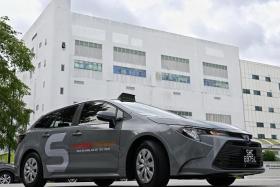Use higher fares to improve public transport
Your views
AARON LOW
The high cost of car ownership here has propelled Singapore to top spots in surveys of cost of living in global cities.
To discourage car ownership in land scarce Singapore, the Government has taken many measures, most recently reducing the car population growth rate to zero.
Yet, if one were to ask a middle-income family in Singapore whether they desire to own a car, assuming they do not have one already, the likely response is a "yes".
We need to question ourselves on why this is so, as buying a car is likely to involve a long-term financial commitment that may deplete our savings and put us in debt.
With vehicle emissions being a major contributor to climate change, many countries have been ramping up their public transportation systems to discourage car ownership.
Taking public transport is not only more affordable than owning a car, it can also be more efficient, as long as one is not particular about sharing space with others.
One can reach Orchard from Yishun on the MRT in less than 25 minutes, which is hard to match in a car, especially if one adds the time it takes to find parking.
And the MRT ride would cost less than $2, while one has to consider the cost not only of running the car and parking it, but the $100,000 or so needed to buy it.
There are valid economic grounds for the huge difference in pricing. Unlike cars, which generate negative externalities such as air pollution and traffic jam, public transport caters to the masses. So it is only fair that car use and/or ownership is taxed and public transport subsidised.
Why then, is it that we still have a high car ownership rate?
Why do so many of us still favour exorbitant private transport over public transport?
It seems the two are not close substitutes for each other. This implies that a rise in the price of car travel will result in a less than proportionate rise in the demand for public transport. And the same relationship is observed for the price of public transport and the demand for private transport.
The benefits of using a car -comfort, privacy and exclusivity - are still preferred despite our efficient public transportation system and efforts to discourage car use.
The many disruptions on our MRT system may also have dented the public's confidence in its reliability.
But economics can again potentially be used to discourage the use of private transport.
Public transport fares may rise at the next review. This is unlikely to have an impact on the demand for cars. Moreover, our fares are cheap compared with other cities and have room to be raised.
What matters is that with the increase in fares, people's confidence in the public transport system is restored. The authorities must improve the transport infrastructure and strengthen the reliability of the system.
Other improvements, such as making the system more child-friendly would help in reducing the perceived superiority of private transport.
Good role models to emulate include the public transport systems in Hong Kong and Swiss cities such as Zurich.
Measures to alter Singaporeans' mindset of having a car as a status symbol will take a long time to be effective, as it is so ingrained in our society.
But if our public transport system can be further improved or at least made more reliable, there is a decent chance that we can achieve a gradual decline in car ownership rates.
Get The New Paper on your phone with the free TNP app. Download from the Apple App Store or Google Play Store now



